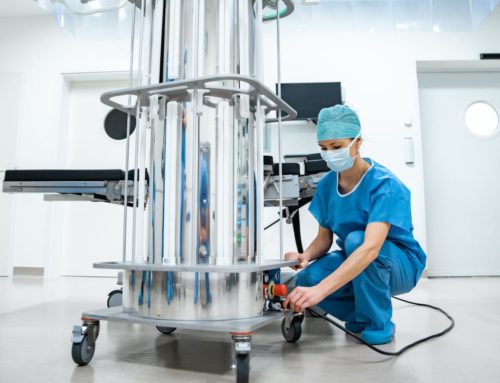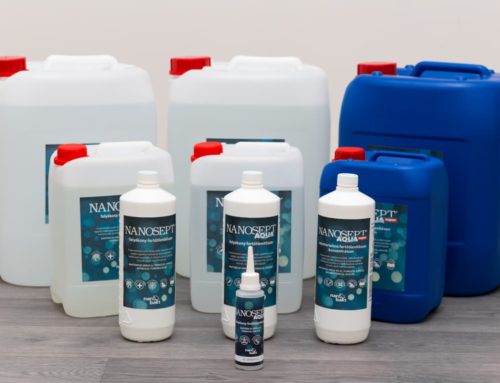Is there a disinfectant that can be used to fight against superbacteria responsible for a very significant proportion of hospital death, which is becoming an increasingly serious problem, more effectively than at present?
Hospital infections are a problem that is difficult to control worldwide, and there is a growing threat from so-called multidrug-resistant bacteria, also known as superbacteria, that are resistant to multiple antibiotics.
These bacteria are resistant to several antibiotics at the same time, and there are even some that are resistant to virtually all antibiotics (for this purpose, the word pan-resistant has recently been used instead of multidrug-resistant).
One example for this is the case of a woman from Nevada who died of a Klebsiella pneumoniae infection that was resistant to all (26) antibiotics accepted in the United States.
Thus, pan-resistance can already be an unsolvable problem for treating physicians today, and the situation will almost certainly be much worse in the future.
Currently, 700 000 people worldwide die each year because of antibiotic-resistant infections – more than 30 000 of them in Europe – and if there is no change, pessimistic estimates put that number at 10 million by 2050.
Antibiotic resistance can thus become one of the leading causes of death that outruns, for example, the frequency of deaths caused by cancer.
Two-thirds of superbacterial infections are of hospital origin
In addition to Klebsiella Pneumoniae, multidrug- or pan-resistant bacteria include Staphylococcus aureus, Mycobacterium tuberculosis, Salmonella tiphy and Neisseria gonorrhoeae.
People can be infected by such bacteria anywhere, but it typically occurs in hospitals: this is due to the high use of antibiotics in hospitals and the weakened immune system of patients in many cases. If patients are not properly segregated, infections can spread more easily, which affects patients treated in intensive care units most drastically.
Superbacteria can spread through contact between patients, healthcare professionals and visitors, so regular hand washing with an alcoholic disinfectant is very important. Another way to spread through contact is with infected medical devices during surgery and treatment with catheters.
It is therefore essential for hospitals to ensure that medical equipment and operating rooms as well as hospital wards are properly disinfected in addition to adhering to basic hygiene protocols for hand washing.
Nanosept Aqua Super: increased protection against resistant bacteria
Next to the traditional disinfectants used in hospitals, a new nanotechnology-based option has become available, the use of a disinfectant that also contains nanosilver particles in addition to hydrogen peroxide.
Nanosept Aqua is aldehyde- and chlorine-free, so it is completely harmless to the environment and does not interact with those used in hospitals. In lung care, chlorine-free is an additional benefit, as it eliminates the need for the treated patient to inhale chlorine gas that irritates their mucous membranes.
Due to the content of hydrogen peroxide and nanosilver the disinfectant has an immediate and long-lasting antimicrobial effect:
- Hydrogen peroxide is a known oxidizing agent that kills microorganisms using hydroxyl free radicals: they are highly reactive, so they can react with bacterial membrane lipids, DNA, and other vital cellular components.
- The antibacterial effect of silver particles can be attributed to the increased activity in chemical reactions: when bacteria and few-nanometer silver particles meet, the compounds that make up the cell wall of the bacteria react with the silver particles, from which silver ions are released. The chemical reaction transforms the cell wall, which protects the bacterium from external influences, enabling the silver ions to enter the bacteria and destroy the enzymes that act as catalysts for metabolic processes.
A great advantage of the method is that while bacteria are able to develop resistance to antibiotics, but not to silver.
Where can this disinfectant be used in the hospital?
Virtually everywhere. The method can be used:
- in surgery rooms (floor, walls, ceiling)
- intensive care units and wards
- in premature baby departments
- in hospital toilets and washrooms
that is, in all places where antibiotic-resistant superbacteria can be expected to settle.
Nanosept aqua disinfectant can also be used to disinfect medical devices used for invasive procedures (such as endoscopes) as well as various catheters. Nanosilver forms a thin coating on the treated surfaces as a result of which the disinfectant can exert its effect not only for a few hours but even for several days.
It is easy to apply and does not require any training. It is also more ideal for washing than chlorinated disinfectants as it can be used to eliminate the characteristic, often disturbing odour of chlorine in hospitals.
Hospital air conditioners can also be effectively cleaned using Nanosept Aqua
In the case of hospitals, it is of paramount importance that air conditioners are cleaned regularly and professionally, as patients with a weakened immune system are much more vulnerable to pathogens that settle in the equipment than the healthy population.
One of the most dangerous pathogens that favours poorly maintained air conditioners is the Legionella bacterium that can even cause fatal pneumonia. The bacterium is resistant to chlorine, while Nanosept Aqua kills the pathogen by thoroughly washing the AC.
For more information on the steps and benefits of climate cleaning with Nanosept Aqua, see Cleaning air-conditioners effectively with Nanosept.



